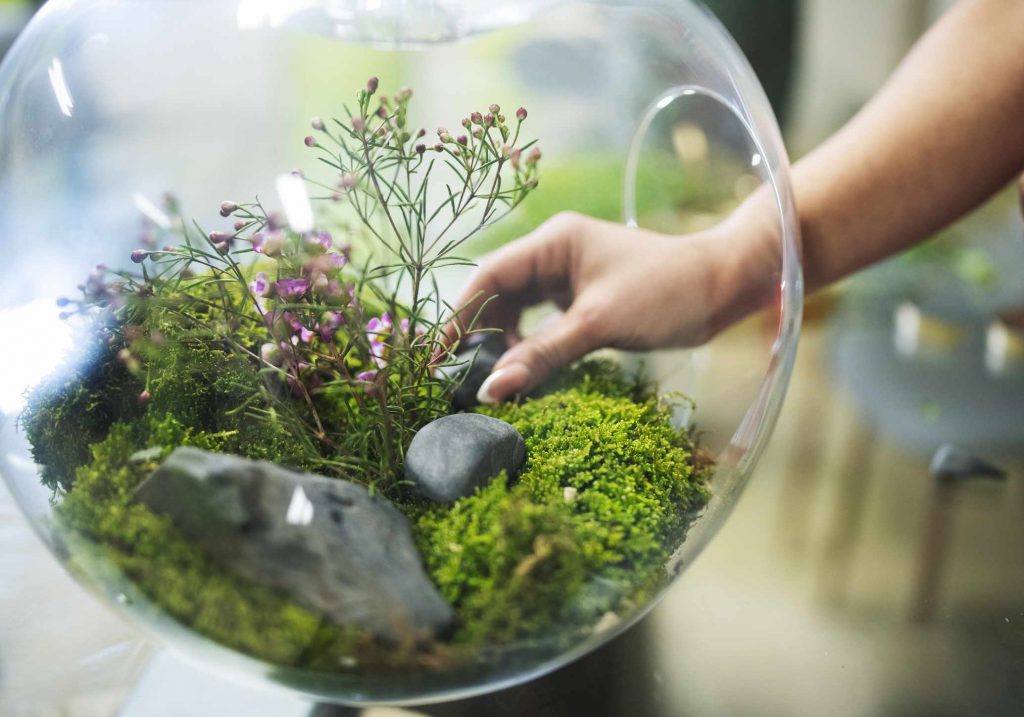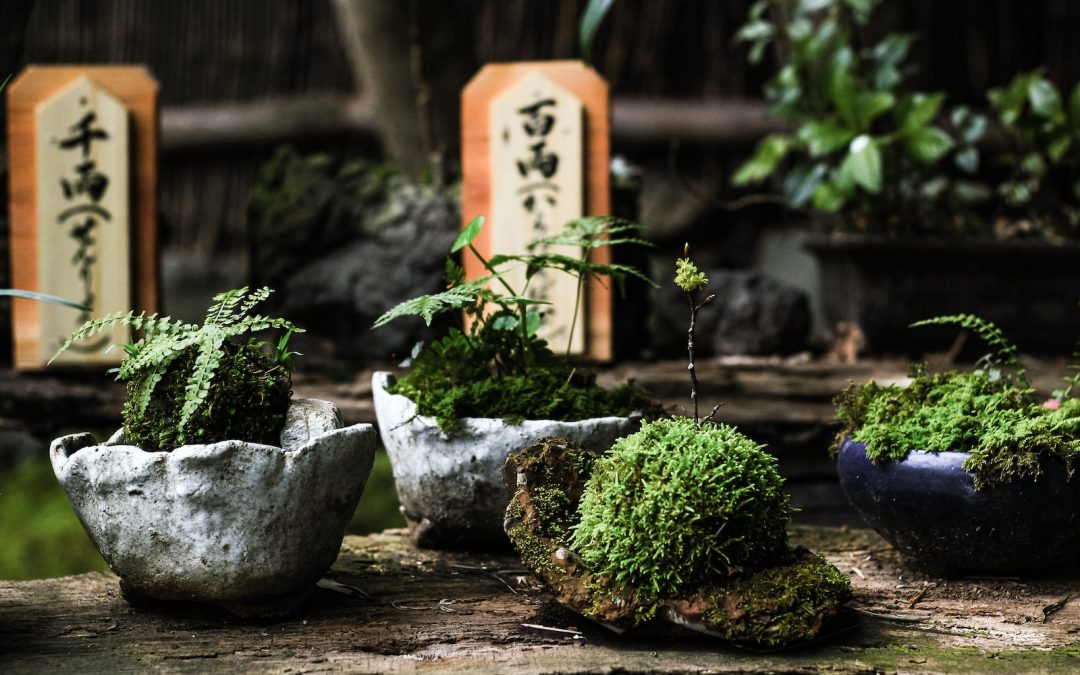An indoor moss garden is one of the easiest ways to bring calm, soft greenery into your home. Moss needs very little height, loves shade, and looks like a tiny forest floor when arranged well in a bowl, tray, or glass container.
If you want to build a strong base for overall plant care, it’s worth reading our Indoor Garden Care: Definitive Guide first.
Contents
- 0.1 What Is an Indoor Moss Garden?
- 0.2 Best Moss Types for Indoor Moss Gardens
- 0.3 How to Make an Indoor Moss Garden
- 0.4 How to Care for an Indoor Moss Garden
- 0.5 Troubleshooting Common Moss Garden Problems
- 0.6 FAQs About Indoor Moss Gardens
- 0.7 Final Thoughts on Making an Indoor Moss Garden
- 0.8 Related Articles
- 1 Build a Striking Indoor Cactus Garden
What Is an Indoor Moss Garden?
An indoor moss garden is a shallow container filled with moist substrate, moss, and sometimes stones, wood, or miniature decorations. Unlike typical houseplants, moss doesn’t have true roots. It absorbs moisture and nutrients through its leaves, which means it thrives in consistently damp, shaded environments.
Indoor moss gardens work well as:
table-top centrepieces
shelf or desk décor
zen-style accent pieces
low-light alternatives to leafy plants
Because moss stays low and dense, an indoor moss garden is perfect for small spaces and people who prefer subtle, natural-looking greenery.

Best Moss Types for Indoor Moss Gardens
To create a healthy indoor moss garden, choose species that cope well with still air and low to medium light.
Good options include:
Cushion moss – forms small, rounded mounds that look like mini hills.
Sheet moss – creates a soft, carpet-like layer; great as a base.
Fern moss – delicate, fern-like fronds that add texture.
Mood moss – thick, fluffy appearance for a forest-floor look.
You can collect moss from your own garden (where legal and safe), or buy prepared pieces intended for terrariums and craft projects.
How to Make an Indoor Moss Garden
1. Choose the right container
Moss doesn’t need deep soil, but it does need a stable, humid environment. Shallow dishes, trays, or glass bowls work well for most indoor moss gardens.
Good container ideas:
low ceramic dishes
shallow glass bowls
open terrarium-style containers
stone or concrete trays
A simple glass terrarium container for indoor moss gardens looks modern and helps retain humidity without fully sealing the plants.
2. Prepare the base layers
Moss needs moisture but not waterlogged conditions. A layered base helps balance drainage and humidity.
Basic base structure:
a thin layer of small stones or gravel at the bottom
a layer of activated charcoal if you’re using non-draining glass (helps reduce odours)
a shallow layer of moist, well-squeezed sphagnum moss or a light, damp soil mix
Avoid heavy, compacted soil — moss prefers a soft, airy surface.
3. Moisten the surface
Before adding your moss, lightly mist the surface so it’s evenly damp but not dripping. This helps new moss pieces attach and settle in.
The surface should feel cool and moist to the touch, with no standing water pooling at the bottom of the container.
4. Arrange and press in the moss
Place pieces of moss onto the prepared surface, like fitting together a soft puzzle. Gently press each piece down so it makes good contact with the base layer.
Design tips:
mix different moss textures for a more natural look
create small mounds and dips for a “mini landscape”
leave a few open areas for stones or driftwood
Once you’re happy with the layout, mist lightly again to help everything settle.

5. Add decorative elements
Stones, pebbles, and small branches turn a simple indoor moss garden into a miniature forest scene.
You can add:
smooth river stones
small pieces of driftwood or bark
decorative gravel paths
a single larger rock as a focal point
For a polished finish, many people like using small, natural decorative pebbles that won’t discolour when damp.
6. Place your moss garden in the right spot
Moss prefers indirect light and consistent moisture.
Ideal conditions for an indoor moss garden:
bright, indirect light or light shade
away from strong midday sun, which can dry and bleach the moss
not too close to radiators, heaters, or strong fans
A north-facing windowsill, shaded shelf, or coffee table away from direct light often works well.
How to Care for an Indoor Moss Garden
Moisture
Moss likes consistently damp conditions, not soaking wet soil. Mist the surface gently whenever it starts to look slightly dry or dull. If water pools at the bottom, reduce misting for a few days.
Light
Indirect light or shade is best. Too much sun can cause browning, while very low light can make moss thin and weak.
Airflow
Gentle airflow helps prevent mould, but avoid strong drafts that dry the moss too quickly.
Cleaning
Remove fallen debris like leaves or dust so the moss can photosynthesise properly and stay fresh.
Many terrarium and moss guides — such as this RHS advice on shade-loving plants and moss care — recommend balancing humidity with occasional fresh air to keep everything healthy.
Troubleshooting Common Moss Garden Problems
Moss turning brown or crispy
Usually caused by too much direct sun or not enough moisture. Move your indoor moss garden to a shadier spot and mist more regularly.
Moss looking pale or patchy
Can be a sign of low humidity or poor contact with the base layer. Press the moss gently back down and increase misting slightly.
Mould or fuzzy growth on the surface
Too much moisture and not enough air circulation. Let the surface dry slightly, increase ventilation, and remove any badly affected pieces.
Condensation on glass containers all day
High humidity with poor ventilation. Remove the lid if you’re using one, or leave the container open for part of the day.
FAQs About Indoor Moss Gardens
1. How often should I mist an indoor moss garden?
Most indoor moss gardens benefit from a light mist every few days, but it depends on your room’s humidity and temperature. Check the moss regularly and mist whenever it starts to look slightly dry.
2. Can I keep an indoor moss garden in direct sunlight?
No, direct sun usually dries and burns moss. Indirect light or light shade is much better for keeping it green and soft.
3. Does an indoor moss garden need drainage holes?
Not always, especially in shallow decorative bowls or glass containers. Just avoid overwatering and use a thin layer of gravel and charcoal at the bottom to reduce water build-up and odours.
4. Can I use moss from my garden indoors?
You can, as long as you collect it legally and gently. Rinse off soil and insects, then press it into your prepared container and keep conditions cool, moist, and shaded.
5. Why is my indoor moss garden going yellow or dull?
This can happen from too much light, dry air, or old water. Move it to a shadier spot, increase misting slightly, and refresh any sections that look tired.
Final Thoughts on Making an Indoor Moss Garden
An indoor moss garden is a peaceful, low-maintenance way to bring nature into small spaces. With a shallow container, soft base layer, and a mix of lush moss textures, you can create a tiny landscape that feels calm and grounding. Keep it moist, shaded, and gently ventilated, and your moss will reward you with vibrant green growth and a soothing, woodland feel indoors.
Related Articles
CREATE BOLD, LOW-MAINTENANCE DISPLAYS
Build a Striking Indoor Cactus Garden
If you love the calm look of moss gardens, you’ll also enjoy creating a sculptural indoor cactus garden. Learn how to choose the right cacti, soil, and container to build a long-lasting desert-style display that needs very little care.

